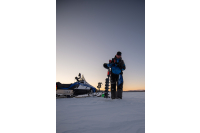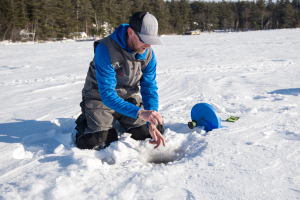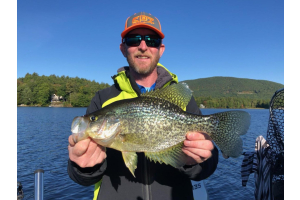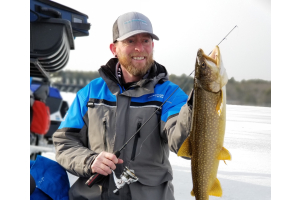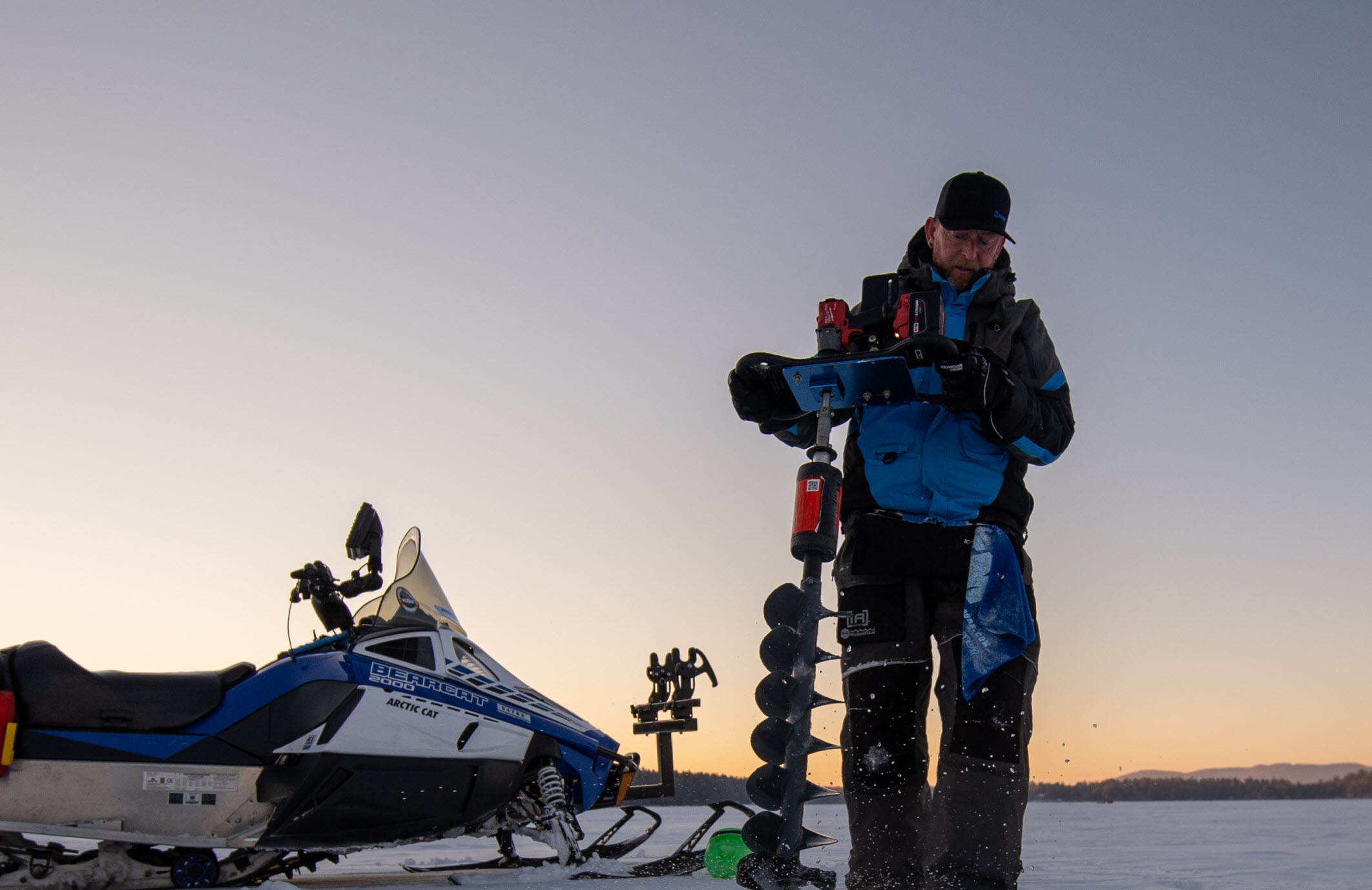
A system is a series of steps that work together to complete a task. In this year’s Ice Annual Magazine, I wrote about some techniques to give you an edge while ice fishing. I talked about how that edge doesn’t always come in the form of a new lure, although it might, but often comes in by way of several more subtle things that anglers don’t always attribute directly to their ice fishing success. Another way to find success is sometimes as simple as a different perspective. How do businesses, like manufacturing facilities, find their success? One way they speed up productivity is to develop a system. You can’t catch fish if you’re not actually fishing, so anything that helps you keep your line in the water more will most definitely result in more fish on the ice.
You hear a lot about efficiency in ice fishing circles. Efficiency and system are somewhat synonymous with one another. My system starts off the ice in how I store my rods, tackle and other gear. I use a double-sided rod locker to store the bulk of my rods. I keep it in my snowmobile trailer. This allows me to grab as few or as many as I want for the day. When I’m traveling on the ice, I use a single-sided rod locker. The single-sided case takes up less space, but still protects my rods. Regardless of the case, every one of my rods has a rod slick on it. Nothing will cost me time like untangling rods that don’t have slicks on them, and I know exactly when they will be tangled the worst…when I need them the most. At least that’s how it feels when a huge school of feeding fish shows up under me. Time without my line in the water feels like slow motion.
Tackle storage is equally as important to me, especially with the evolution of tungsten. Tungsten is more expensive than lead. Loose jigs bouncing around the inside of a standard tackle box are likely to have the paint chip off or fall out, only to become stuck in other places and cost you time, or worse, lost and gone forever. Clam Outdoors makes it easier than ever to store tackle. They have a several different sizes of both jig and spoon boxes. You can do what I do and use a large jig box and the Deluxe Spoon Box to house the bulk of my tackle. I have a small jig box loaded with my most commonly-used jigs and space for a few substitutes as needed. I do the same with my spoons. Leech Flutter Spoons and Blade Spoons are a staple for me. I keep the majority of my spoons in a Deluxe Spoon Box and when I’m not guiding, I take a small spoon box with my favorites for the day. Staying organized means less time searching for tackle and more tie fishing.
I don’t appreciate organization as much as I do when I get to my fishing spot, but my system doesn’t end there. For years I had a habit of setting everything I thought I would use where it would be easily accessible. I thought that by having everything ready, it would save me time if I needed it. It wasn’t until after I met Dave Genz that I began to look at efficiency from a different perspective. I realized I almost never needed many of the object I was getting ready. By taking most of my gear out I was costing myself time and essentially anchoring myself to an area in order to avoid having to put everything away. News flash Tim, you have to put it away at some point. Today, when I arrive at a fishing spot, I put anything I’m not actually using at that moment back where it belongs. If a school if fish moves on and I want to go with it, or they never appear in the first place and I need to quickly change locations, I can do so much easier and faster if the majority of my gear is put away.
There are many ways to make yourself more productive. Having a system is by no means the end-all key to success, but it makes a great foundation to build other skills off. Have fun creating your own system based on tips from others and steps you create yourself. Then put your stamp on it and own it. Having an effective system makes ice fishing more productive and easier, and therefore more fun, with the latter being the most important.





